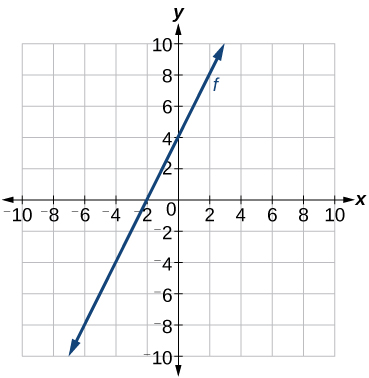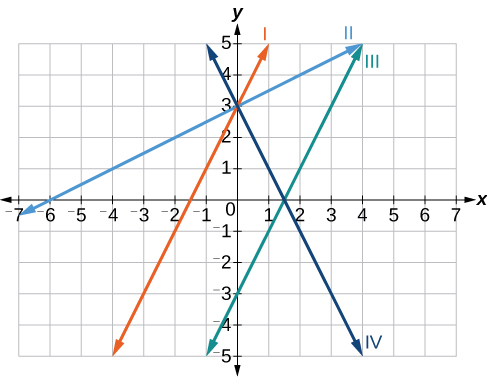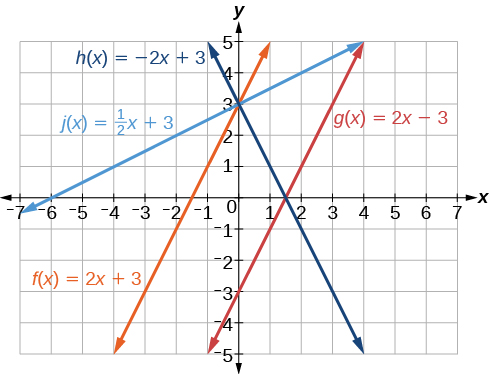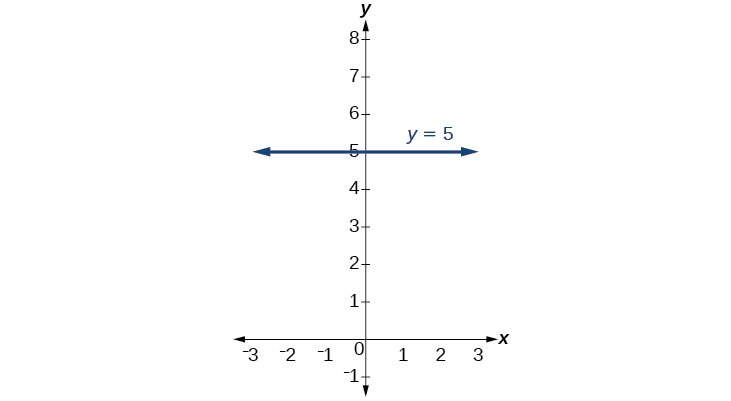| << Chapter < Page | Chapter >> Page > |

Then we can calculate the slope by finding the rise and run. We can choose any two points, but let’s look at the point To get from this point to the y- intercept, we must move up 4 units (rise) and to the right 2 units (run). So the slope must be
Substituting the slope and y- intercept into the slope-intercept form of a line gives
Given a graph of linear function, find the equation to describe the function.
Match each equation of the linear functions with one of the lines in [link] .

Analyze the information for each function.
Now we can re-label the lines as in [link] .

So far, we have been finding the y- intercepts of a function: the point at which the graph of the function crosses the y -axis. A function may also have an x -intercept, which is the x -coordinate of the point where the graph of the function crosses the x -axis. In other words, it is the input value when the output value is zero.
To find the x -intercept, set a function equal to zero and solve for the value of For example, consider the function shown.
Set the function equal to 0 and solve for
The graph of the function crosses the x -axis at the point
Do all linear functions have x -intercepts?
No. However, linear functions of the form where is a nonzero real number are the only examples of linear functions with no x-intercept. For example, is a horizontal line 5 units above the x-axis. This function has no x-intercepts, as shown in [link] .

The x -intercept of the function is value of when It can be solved by the equation
Find the x -intercept of
Set the function equal to zero to solve for
The graph crosses the x -axis at the point

Notification Switch
Would you like to follow the 'Precalculus' conversation and receive update notifications?